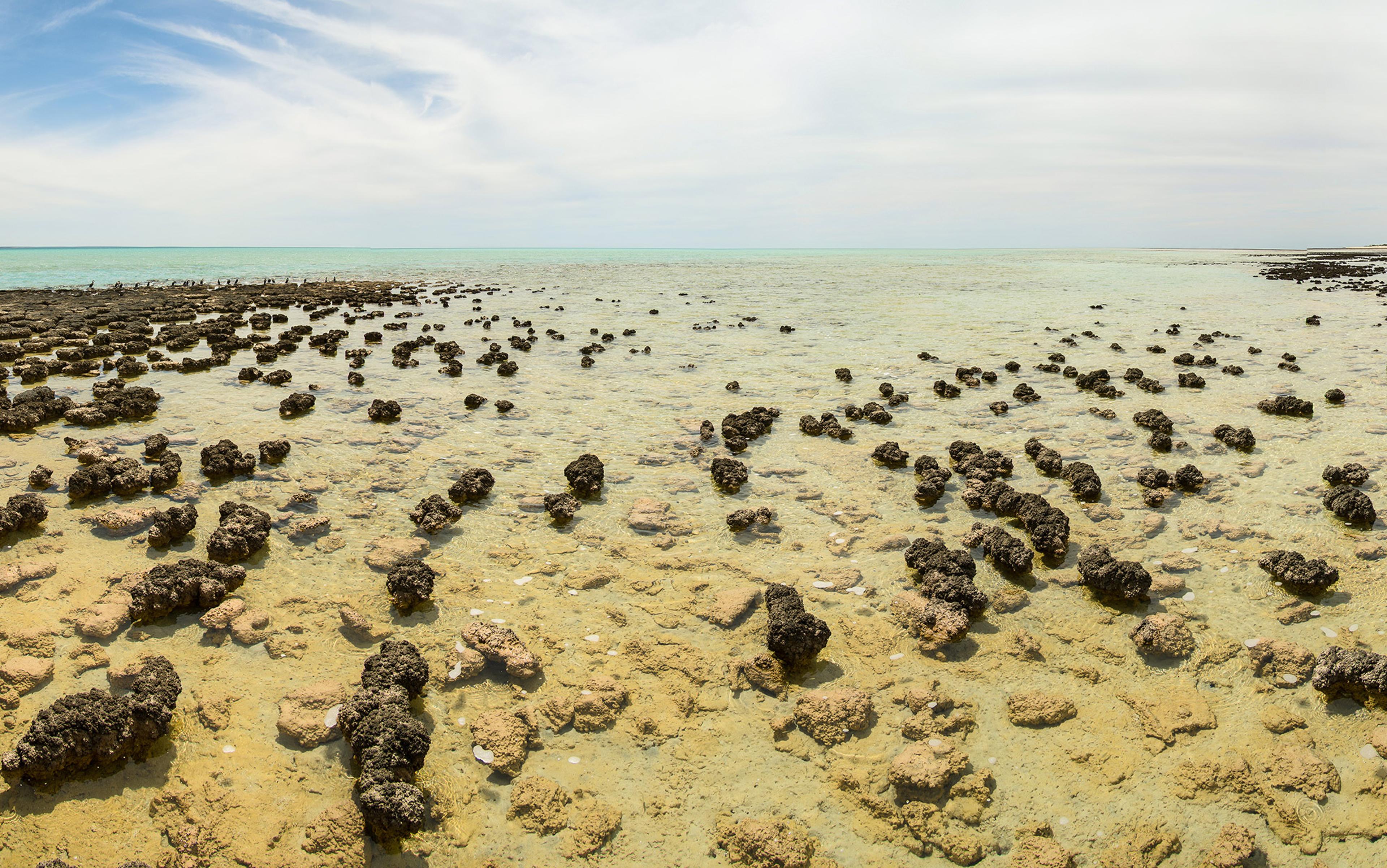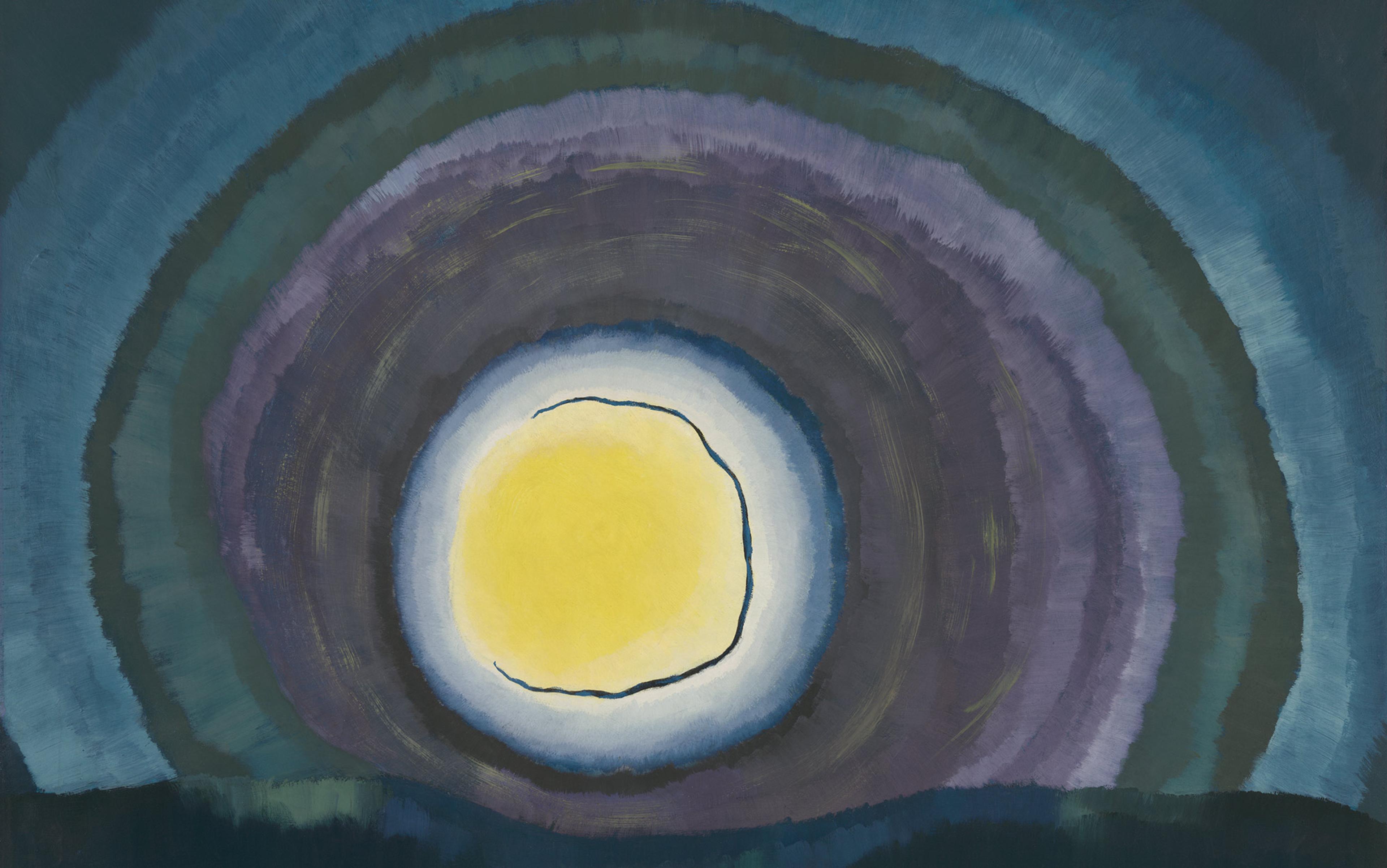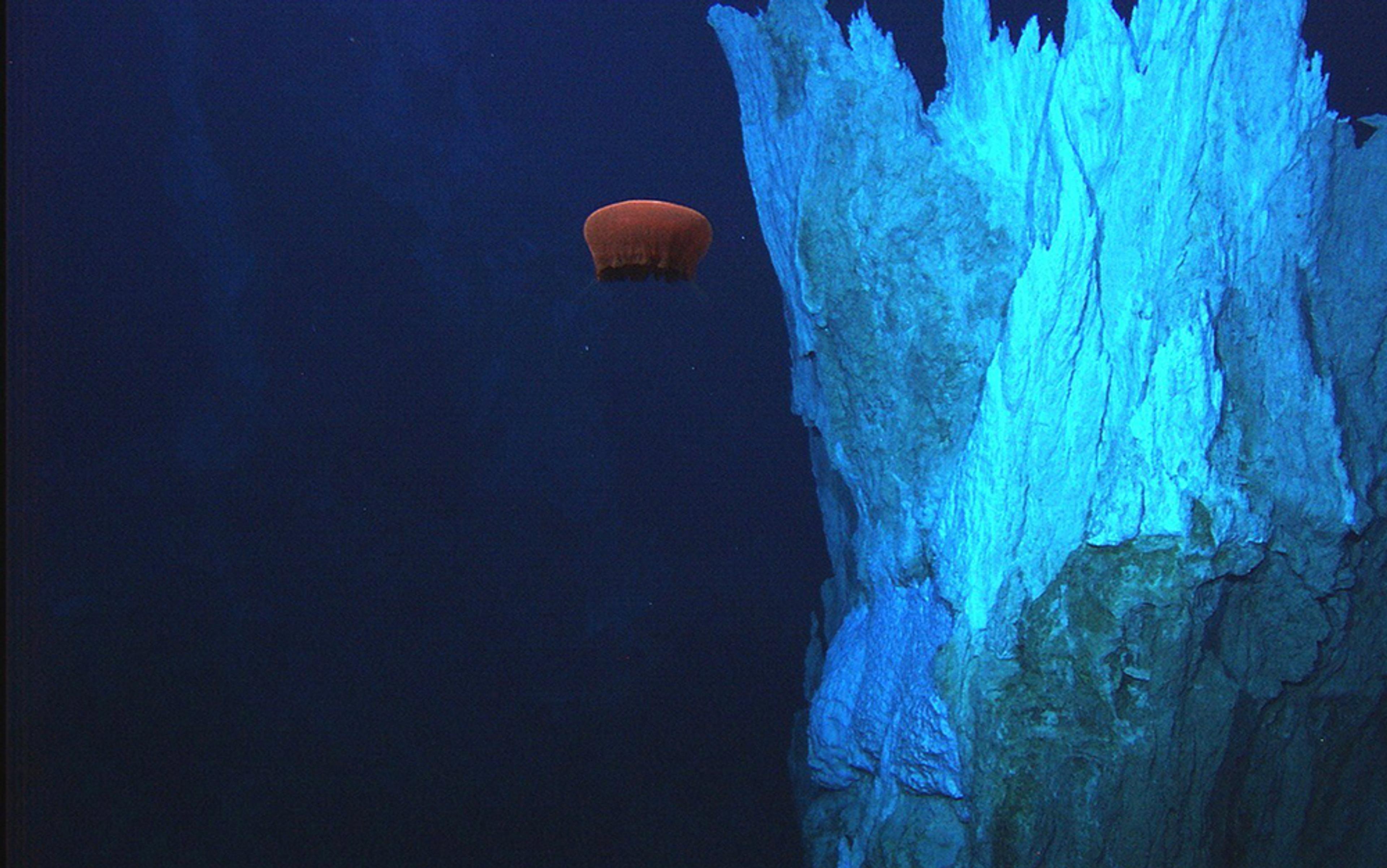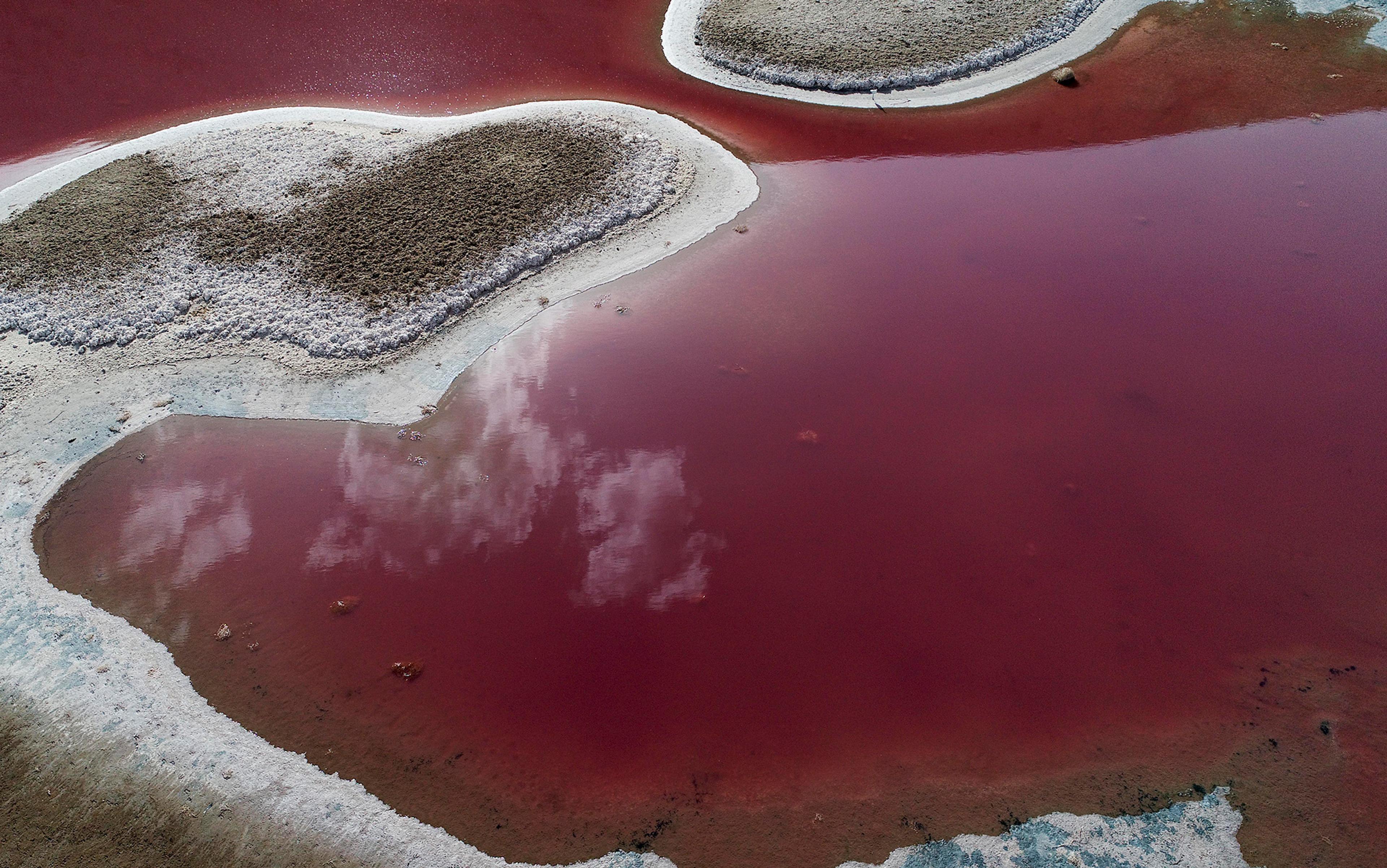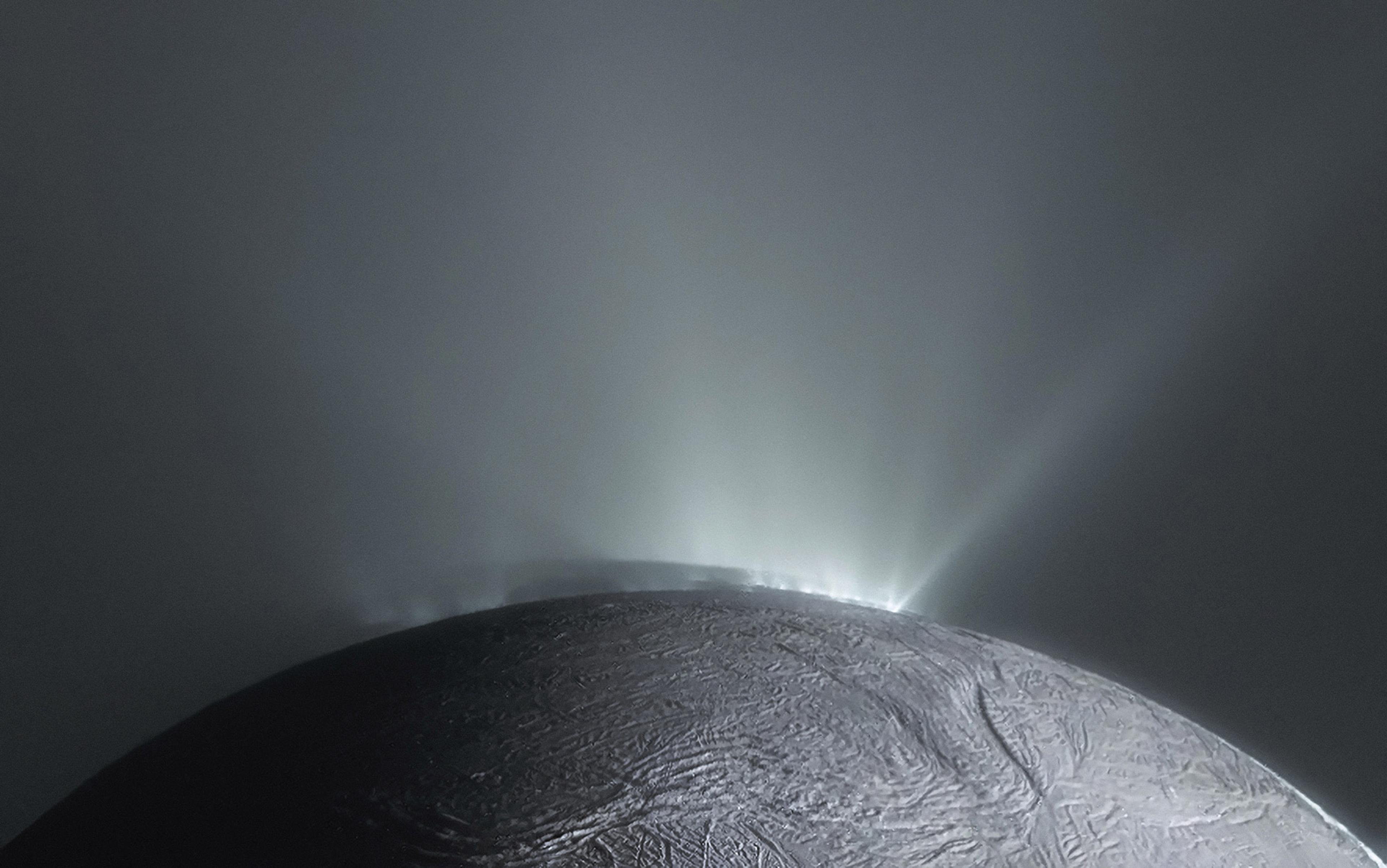Here’s a story you might have read before in a popular science book or seen in a documentary. It’s the one about early Earth as a lifeless, volcanic hellscape.
When our planet was newly formed, the story goes, the surface was a barren wasteland of sharp rocks, strewn with lava flows from erupting volcanoes. The air was an unbreathable fume of gases. There was little or no liquid water. Just as things were starting to settle down, a barrage of meteorites tens of kilometres across came pummelling down from space, obliterating entire landscapes and sending vast plumes of debris high into the sky. This barren world persisted for hundreds of millions of years. Finally, the environment settled down enough that oceans could form, and the conditions were finally right for microscopic life to emerge.
That’s the story palaeontologists and geologists told for many decades. But a raft of evidence suggests it is completely wrong.
The young Earth was not hellish, or at least not for long (in geological terms). And, crucially, life formed quickly after the planet solidified – perhaps astonishingly quickly. It may be that the first life emerged within just millions of years of the planet’s origin.
With hindsight, it is strange that the idea of hellscape Earth ever became as established as it did. There was never any direct evidence of such lethal conditions. However, that lack of evidence may be the explanation. Humans are very prone to theorise wildly when there’s no evidence, and then to become extremely attached to their speculations. That same tendency – becoming over-attached to ideas that have only tenuous support – has also bedevilled research into the origins of life. Every journalist who has written about the origins of life has a few horror stories about bad-tempered researchers unwilling to tolerate dissent from their treasured ideas.
Now that the idea of hellscape Earth has so comprehensively collapsed, we need to discard some lingering preconceptions about how life began, and embrace a more open-minded approach to this most challenging of problems. Whereas many researchers once assumed it took a chance event within a very long timescale for Earth’s biosphere to emerge, that increasingly looks untenable. Life happened fast – and any theory that seeks to explain its origins now needs to explain why.
One of the greatest scientific achievements of the previous century was to extend the fossil record much further back in time. When Charles Darwin published On the Origin of Species (1859), the oldest known fossils were from the Cambrian period. Older rock layers appeared to be barren. This was a problem for Darwin’s theory of evolution, one he acknowledged: ‘To the question why we do not find records of these vast primordial periods, I can give no satisfactory answer.’
The problem got worse in the early 20th century, when geologists began to use radiometric dating to firm up the ages of rocks, and ultimately of Earth itself. The crucial Cambrian period, with those ancient fossils, began 538.8 million years ago. Yet radiometric dating revealed that Earth is a little over 4.5 billion years old – the current best estimate is 4.54 billion. This means the entire fossil record from the Cambrian to the present comprises less than one-eighth of our planet’s history.
Stromatolites were well known, but these, from the Pilbara region in Western Australia, were astonishingly old
However, in the mid-20th century, palaeontologists finally started finding older, ‘Pre-Cambrian’ fossils. In 1948, the geologist Reg Sprigg described fossilised impressions of what seemed to be jellyfish in rocks from the Ediacara Hills in South Australia. At the time, he described them as ‘basal Cambrian’, but they turned out to be older. A decade later, Trevor Ford wrote about frond-like remains found by schoolchildren in Charnwood Forest in England; he called them ‘Pre-Cambrian fossils’. The fossil record was inching back into the past.
By 1980, the fossil record had become truly epic. On 3 April that year, a pair of papers was published in Nature, describing yet more fossils from Australia. They were stromatolites: mounds with alternating layers of microorganisms and sediments. In life, microbes like bacteria often grow in mats. These become covered in sediments like sand, and a new layer of cells grows on top, over and over. Stromatolites were well known, but these, from the Pilbara region in Western Australia, were astonishingly old. One set was 3.4 billion years old; the other looked like it might be even older, as much as 3.5 billion years old.
Over the past 45 years, palaeontologists have meticulously re-analysed the Pilbara remains to confirm that they are real. It’s not a trivial problem: with rocks that ancient, strange distortions can form that look like fossilised microbes but are actually just deformed rocks. To resolve this, researchers have deployed an array of techniques, including searching for traces of organic matter. At this point, we are as confident as we can be that the Pilbara fossils are real. That means life has existed for at least 3.5 billion years. When I wrote The Genesis Quest back in 2020, I said this gave us a billion-year time window after the formation of Earth in which life could form. Since then, the evidence for life has been pushed further back in time.
Until relatively recently, many researchers would have said the window was distinctly narrower than that. That’s because there were reasons to think that Earth was entirely uninhabitable for hundreds of millions of years after it formed.
The first obstacle to life’s emergence was the Moon’s formation. This seems to have happened very soon after Earth coalesced, and in the most dramatic way imaginable: another planetary body, about the size of Mars, collided with Earth. The impact released so much energy it vaporised the surface of the planet, blasting a huge volume of rocks and dust into orbit. For a little while, Earth had a ring, until all that material gradually fused to form the Moon. This explosive scenario is the only one anyone has so far thought of that can explain why Moon rocks share similar isotopes with Earth rocks.
It seems clear that, if there was any nascent life on the young Earth, it was obliterated in the searing heat of the impact. Still, this happened around 4.5 billion years ago. What about the billion years between the Moon-forming impact and the Pilbara fossils?
The surface was an ocean of magma that slowly cooled and solidified
We can divide this vast span of time into two aeons. They are divided by one simple factor: the existence of a rock record. The oldest known rocks are 4.031 billion years old. The half-billion years before that is called the Hadean; the subsequent time is called the Archean.
As its ominous name suggests, the Hadean was assumed to have been hellish. In the immediate aftermath of the Moon-forming impact, the surface was an ocean of magma that slowly cooled and solidified. Artist’s impressions of this aeon often feature volcanoes, lava flows and meteorite impacts.

Artist’s impression of the Hadean aeon. Courtesy Wikipedia
The early Archean, if anything, seemed to be worse – thanks to a little thing called the Late Heavy Bombardment. Between around 3.8 and 4 billion years ago, waves of meteoroids swept through the solar system. Earth took a battering, and any life would have been obliterated. Only when the bombardment eased, 3.8 billion years ago, could life begin. In which case, life began in the 300 million years between the end of the Late Heavy Bombardment and the Pilbara fossils.
This was a compelling narrative for many years. It was repeated uncritically in many books about the origins and history of life. Yet there were always nagging issues. In particular, palaeontologists kept finding apparent traces of life from older strata – life that was, on the face of it, too old to be real.
As early as 1996, the geologist Stephen Mojzsis, then at the University of California, San Diego, and his colleagues were reporting that life was older than 3.8 billion years. They studied crystals of apatite from 3.8-billion-year-old rocks from the Isua supracrustal belt in West Greenland. Within the crystals are traces of carbon, which proved to be rich in one isotope, carbon-12, and low in the heavier carbon-13. This is characteristic of living matter, as living organisms prefer to use carbon-12.
Nearly two decades later, the record was extended even further back in time by Elizabeth Bell at the University of California, Los Angeles and her colleagues. They studied thousands of tiny zircon crystals from the Jack Hills of Western Australia. Some of these crystals are Hadean in age: since there are no rocks from the Hadean, these minuscule shards are almost all we have to go on. One zircon proved to be about 4.1 billion years old. Trapped within it was a tiny amount of carbon, with the same telltale isotope mixture that suggested it was biogenic.
For many years, the sceptics carried the argument, but more recently the tides have turned
Perhaps most dramatically, in 2017, Dominic Papineau at University College London and his colleagues described tubes and filaments, resembling colonies of bacteria, in rocks from the Nuvvuagittuq belt in Quebec, Canada. The age of these rocks is disputed: they are at least 3.77 billion years old, and a study published this June found some of them are 4.16 to 4.20 billion. This would mean that life formed within 200 million years of Earth’s formation, deep in the Hadean.

Haematite filament attached to a clump of iron from hydrothermal vent deposits found in Quebec, Canada. Photo by Matthew Dodd/UCL
There are many more such studies. None of them is wholly convincing on its own: they often rely on a single crystal, or a rock formation that has been heated and crushed, and thus distorted. Each study has come in for strong criticism. This makes it difficult to assess the evidence, because there are multiple arguments in play.
A believer in an early origin of life would highlight the sheer number of studies, from different parts of the world and using different forms of evidence. A sceptic would counter that we should accept a fossil only if it is supported by multiple lines of evidence, as happened in the Pilbara. To which a believer would say: the rock record from the early Archean is very sparse, and there are no rocks from the Hadean at all. It is simply not possible to obtain multiple lines of evidence from such limited material, so we must make a judgment based on what we have. The sceptic would then say: in that case, we don’t and can’t know the answer.
For many years, the sceptics carried the argument, but more recently the tides have turned. This is partly because the fossil evidence of early life has accumulated – but it’s also because the evidence for the Late Heavy Bombardment sterilising the planet has collapsed.
An early crack in the façade emerged when Mojzsis and Oleg Abramov at the University of Colorado simulated the Late Heavy Bombardment and concluded that it was not intense enough to sterilise Earth. Surface life might have been obliterated, but microbes could have survived underground in huge numbers.
However, the bigger issue is that the Late Heavy Bombardment may not have happened at all. The evidence rested on argon isotopes from Moon rocks collected by the Apollo missions in the 1960s and ’70s. A re-analysis found that those isotopes were prone to a specific kind of artefact in the radioisotope data – creating the illusion of a sharp bombardment 3.9 billion years ago. What’s more, the Apollo missions all went to the same region of the Moon, so the astronauts may have mostly collected rocks from the same big impact – which would all naturally be the same age. Meanwhile, rocks on Earth preserve evidence of past impacts, and they show a long slow decline until 3 billion years ago, or later. Likewise, giant impacts on Mars appear to have tailed off by 4.48 billion years ago. There is also no sign of a Late Heavy Bombardment on the asteroid Vesta.
If the Late Heavy Bombardment really didn’t happen, then it is reasonable to imagine that life began much earlier – perhaps even in the Hadean. The problem is how to demonstrate it, when the fossil evidence is so impossibly scant.
This is where genetics comes in. Specifically phylogenetics, which means creating family trees of different organisms showing how they are related, and when the various splits occurred. For example, phylogenetics tells us that humans, chimpanzees and bonobos are descended from a shared ancestor that lived about 7 million years ago.
By constructing family trees of the oldest and most divergent forms of life, phylogeneticists have tried to push back to the last universal common ancestor (LUCA). This is the most recent population of organisms from which every single living thing today is descended. It is the great-great-etc grandmother of all of us, from bacteria to mosses to scarlet macaws. Estimating the date of LUCA is fraught with uncertainties, but in the past decade phylogeneticists have started to narrow it down.
One such attempt was published by a team led by Davide Pisani at the University of Bristol in the UK. They created a family tree of 102 species, focusing on microorganisms, as those are the oldest forms of life. They calibrated their tree using 11 dates known from the fossil record. The headline finding was that LUCA was at least 3.9 billion years old.
It’s possible that life had existed long before LUCA – beginning early in the Hadean
In 2024, many of the same researchers returned with a more detailed analysis of LUCA based on more than 3,500 modern genomes. This suggested LUCA lived between 4.09 and 4.33 billion years ago, with a best estimate of around 4.2 billion.
What’s more, their reconstruction of LUCA’s genome suggested it was pretty complex, with a genome that encoded around 2,600 proteins. It also seems to have lived in a complex ecosystem. In particular, it appears to have had a primitive immune system, which implies it had to defend itself from some of its microbial neighbours.
These details highlight a point that is not always obvious: LUCA does not represent the origin of life. It is just the most recent ancestor shared by all modern organisms. It’s possible that life had existed long before LUCA – beginning early in the Hadean.
This fits with gathering evidence that the Hadean was not so hellish after all. It’s true that the entire planetary surface was molten at the very start of the Hadean, but it seems to have solidified by 4.4 billion years ago. Evidence from zircons suggests there was abundant liquid water at least 4.3 billion years ago, and possibly 4.4 billion. By 4.2 billion years ago, there seem to have been oceans. These primordial seas may have been considerably deeper than they are today, because Earth’s interior was hotter and could not hold as much water, so for a time there may have been no exposed land – or at least, only small islands.
These strands of evidence amount to a complete rewriting of the early history of life on Earth. Instead of life beginning shortly after the Late Heavy Bombardment 3.8 billion years ago, it may have arisen within 100 million years of the planet’s formation. If so, what does that tell us about how it happened?
The most immediate implication is that our ideas cannot rely on the power of chance at all. There have been a great many hypotheses about the origins of life that relied on a coincidence: say, a one-in-a-billion collision between two biological molecules in the primordial soup. But if life really formed within 0.1 billion years of the planet’s birth, ideas like this are absolutely untenable. There just wasn’t time.
Take the RNA World, one of the leading hypotheses of life’s origins since the 1980s. The idea is that the first life did not contain the smorgasbord of organic chemicals that modern cells do. Instead, life was based entirely on RNA: a close cousin of the more familiar DNA, of which our genomes are made. RNA is appealing because it can carry genetic information, like DNA, but it can also control the rates of chemical reactions – something that is more usually done by protein-based enzymes. This adaptability, the argument goes, makes RNA the ideal molecule to kickstart life.
They must find processes that work quickly and efficiently to generate complexity and life-like systems
However, a close examination of the RNA World scenario reveals gaping holes. An RNA molecule is essentially a chain, and there are huge numbers of possible RNAs, depending on the sequence of links in the chain. Only a fraction of these RNAs actually make proteins. It’s not obvious how those ‘good’ RNAs are supposed to have formed: why didn’t conditions on the young Earth just create a random mix of RNAs? And, remember, we can’t rely on the power of chance and large numbers: it all happened too quickly.
Instead, researchers now largely agree that they must find processes that work quickly and efficiently to generate complexity and life-like systems. But what does that mean in practice? There are various ideas. One prominent school of thought is that life formed in alkaline vents on the sea floor, where the flow of hot water and chemicals created a cradle that incubated life. Others have highlighted the potential of volcanic vents, meteorite impact craters, geothermal ponds, and tidal zones: anywhere that has a flow of energy and chemicals.
The reality is that we are dealing with a huge number of intersecting questions. What was the environment in which the first life emerged? What was that first life made of and how did it work? Was the first life a simplified version of something we can observe today, or was it something radically different – either in composition or mechanism, or both – that was then supplanted by more familiar systems?
I believe that the most promising thing to have happened in origins-of-life research in recent years has been a growing willingness to accept uncertainty and reject dogma.
Origins research is barely a century old: the first widely discussed hypotheses were set out by Alexander Oparin and J B S Haldane in the 1920s, and the Miller-Urey experiment that kickstarted practical research in the field was published in 1953. For those first few decades, origins research was on the fringes of science, with only a handful of researchers actively working on it.
Just as there was no direct evidence that the Hadean was a hellscape, there has been very little hard evidence for any of the competing scenarios for life’s origins. Researchers devised elaborate stories with multiple steps, found experimental evidence that supported one or two of those stages, and declared the problem solved.
What origins research needs is open-mindedness and a willingness to disagree constructively
A small group of people, a lack of hard evidence and a great many intersecting questions: that’s a recipe for dogmatic ideas and angry disagreements. And that’s what origins research was like for decades. I’ve been reporting on the field since the 2000s, and on multiple occasions I’ve seen researchers – including heads of labs – use language that resembled the worst kind of internet trolling. There was a time when I thought this abrasiveness was funny: now I just think it’s ugly and pointless.
What origins research needs is open-mindedness and a willingness to disagree constructively. That culture shift is being driven by a generation of younger researchers, who have organised themselves through the Origin of Life Early-career Network (OoLEN). In 2020, a large group of OoLEN members and other researchers set out what they see as the future of the field. They complained of ‘distressing divisions in OoL research’: for instance, supporters of the RNA World have tended to contemptuously dismiss those who argue that life began with metabolic processes, and vice versa. The OoLEN team argued that these ‘classical approaches’ to the problem should not be seen as ‘mutually exclusive’: instead, ‘they can and should feed integrating approaches.’
This is exactly what is happening. Instead of focusing exclusively on RNA, many teams are now exploring what happens when RNA – or its constituent parts – are combined with other biological molecules, such as lipids and peptides. They are deploying artificial intelligence to make sense of the huge numbers of molecules involved. And they are holding back from strong statements in favour of their own pet hypotheses, and against other peoples’.
This isn’t just a healthier way to work – though it absolutely is that. I believe it will also lead to faster and deeper progress. In the coming years, I expect many more insights into what happened on our planet when it was young and what the first life might have looked like.
I presented the hellscape-Earth scenario as a kind of just-so story. Of course, because the data is so limited, we cannot escape telling stories about our planet’s infancy. But maybe soon we’ll be able to tell some better ones.

